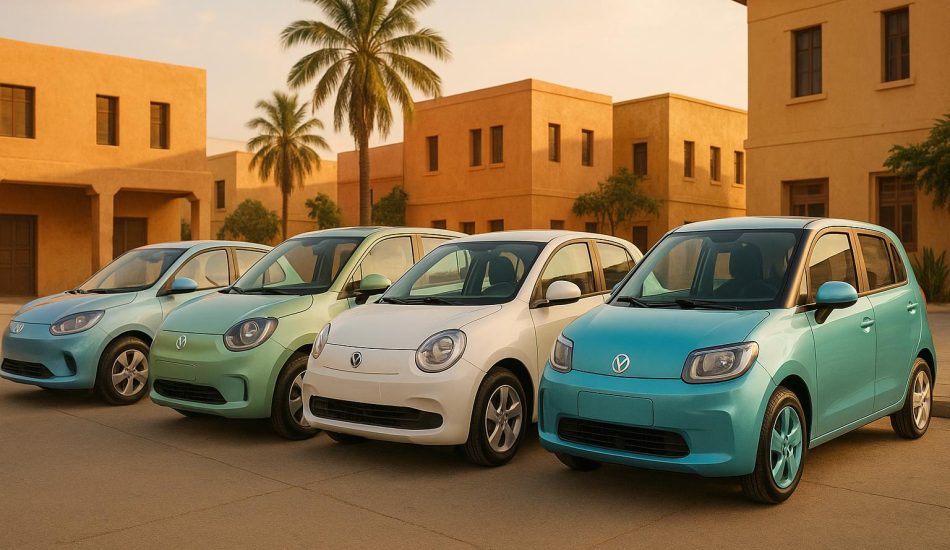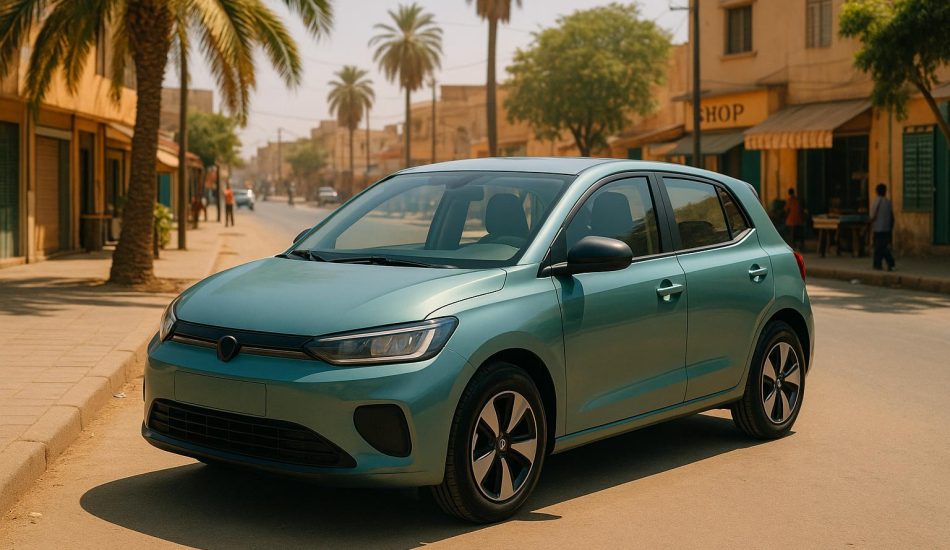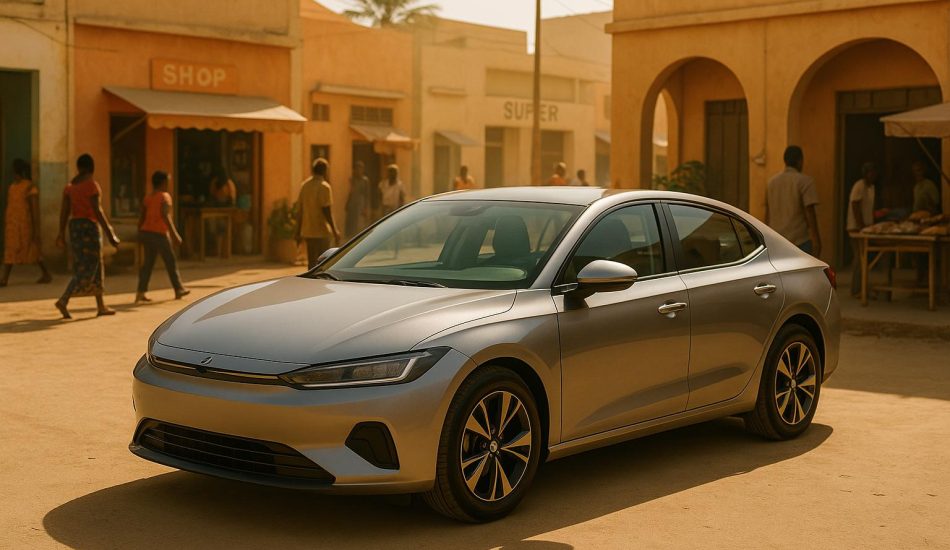
Electric cars in Africa are becoming more accessible in 2025, but affordability varies widely depending on the model, country, and local factors. Entry-level EVs, like the Changan Benni EV, start at around $12,500, while premium options like the Tesla Model 3 can exceed $62,500. Key factors affecting costs include import duties, local assembly efforts, government incentives, and infrastructure challenges. Chinese manufacturers are leading the way with budget-friendly options, while local assembly, such as Nigeria’s Jet EV, helps reduce costs.
Key Points:
- Cheapest EVs: Dayun S5 (~$22,200) and Changan Benni EV ($12,500).
- Mid-range options: BYD Dolphin (~$26,250) and BYD Atto 3 (~$42,667).
- Luxury models: Tesla Model 3 (~$62,500) and BMW i5 (~$67,100).
- Challenges: Import taxes, limited charging infrastructure, and high upfront costs.
- Advantages: Lower fuel and maintenance expenses over time.
For budget-conscious buyers, Chinese-made EVs and locally assembled models are the best options. However, premium models remain out of reach for most due to high costs and limited availability. Government incentives and better infrastructure are key to making EVs more practical across the continent.
Chinese Tech Driving EV Boom Africa Can’t Afford to Miss
1. BYD Dolphin
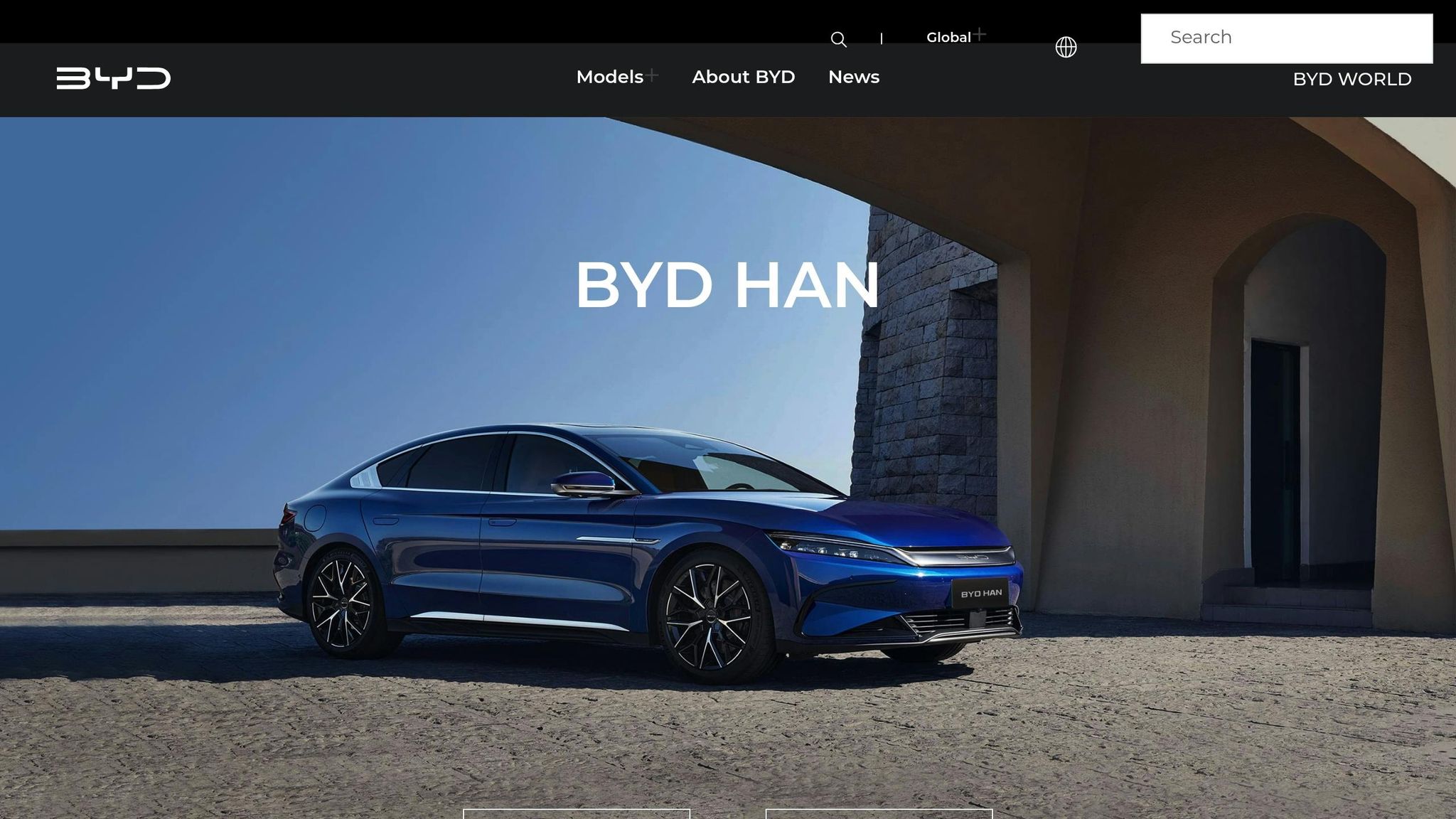
The BYD Dolphin stands out as one of the most affordable electric vehicles (EVs) accessible to African consumers. Manufactured by the Chinese company BYD, this compact EV brings cost-effective electric mobility to the region. Here’s a quick breakdown of its pricing and performance details.
Price (USD)
The BYD Dolphin is positioned as an entry-level EV, aligning with the pricing of other affordable Chinese electric models. Chinese battery electric cars are generally more affordable compared to other EVs in emerging markets. BYD has also shared plans to introduce battery-powered models for international markets, aiming for a price point below €25,000 (around $26,250) by the end of 2026.
Range (miles/kilometers)
Currently, no specific range data is available for the African market.
Charging Time
The BYD Dolphin supports a variety of charging options, making it suitable for different needs. Here’s what you can expect:
- Level 1 and Level 2 charging: Using standard household outlets, the car can gain about 40 miles of range overnight. With a 240V connection, it adds 25-40 miles of range per hour.
- Fast charging: At high-speed charging stations, the battery can reach 80% capacity in approximately 30 minutes.
Availability (new/used)
The BYD Dolphin is currently available for purchase in South Africa.
2. Dayun S5

The Dayun S5 currently holds the title of the most affordable electric car in South Africa as of mid-2025. Designed as a practical option for city dwellers, this compact vehicle is tailored for urban commuting rather than long road trips.
Price (USD)
The Dayun S5 comes in two trim levels:
- Standard model: R399,900 (around $22,200)
- VIP model: R449,900 (around $25,000)
These price points aim to make electric vehicles more attainable for middle-income buyers, lowering the barrier to entry for eco-friendly transportation.
Range (miles/kilometers)
With a claimed range of up to 300 kilometers (about 186 miles), the Dayun S5 is well-suited for city driving. This range comfortably meets the needs of most urban commuters in South Africa, where daily travel distances are typically modest.
Availability (new/used)
The Dayun S5 is now available as a brand-new vehicle in South Africa. Marketed as a "zippy" SUV, it seeks to reshape the local electric vehicle market by offering an affordable and efficient solution for urban mobility.
3. Dongfeng Box

The Dongfeng Box is making waves as an affordable electric vehicle option tailored for South Africa’s expanding EV market. Compact and practical, this model is designed with local driving conditions in mind. Here’s a closer look at its pricing, range, and availability.
Price (USD)
In South Africa, the Dongfeng Box comes with two pricing options:
- Base model: R460,000 (around $24,865)
- Higher trim: R520,000 (around $28,108)
Range
The vehicle boasts an impressive claimed range of up to 430 kilometers (approximately 267 miles). This makes it a versatile choice, whether you’re navigating city streets or planning longer drives between towns.
Availability
The Dongfeng Box is available as a new vehicle in South Africa, presenting a compelling option for those exploring electric cars for the first time. While detailed performance data for urban and rural settings is not yet available, its arrival signals a shift toward more accessible electric mobility in the region.
4. Tesla Model 3
The Tesla Model 3 is designed for those seeking a premium electric vehicle (EV) experience, offering cutting-edge technology and impressive performance. While earlier models cater to budget-friendly buyers, the Model 3 appeals to individuals ready to invest in a higher-end option. However, its pricing places it beyond the reach of many in Africa, where more affordable EVs dominate the market.
Price (USD)
Tesla hasn’t established a direct pricing structure for Africa due to its limited presence in the region. In the U.S., the base Model 3 Long Range RWD for 2025 starts at $42,490. For those exploring second-hand options, used models can often be found for around $25,000.
Range
The Model 3 Long Range RWD boasts an impressive EPA-estimated range of 363 miles, making it one of the top performers in terms of range.
Availability
Tesla’s minimal footprint in Africa means the Model 3 is primarily accessible through import channels. This reliance on imports, coupled with the lack of a robust support network, restricts its presence to a niche market. The challenges of distribution and service infrastructure highlight the hurdles premium EVs face in gaining traction across the continent.
5. Hyundai Kona EV

The Hyundai Kona Electric offers a solid mid-range option for buyers in Africa, though its limited availability locally means most purchases rely on private imports.
Price (USD)
In the U.S., the 2025 base model Kona Electric SE starts at $32,875. For African buyers, private importation adds extra costs, including shipping, duties, and taxes, which can significantly increase the final price.
Range
The Kona Electric is available in two versions: the SE, with a range of 200 miles (322 km), and the SEL, which extends to 261 miles (420 km). These ranges are more than sufficient for daily commutes, especially since average driving distances in many areas are relatively short. However, the sparse charging infrastructure across much of Africa makes the Kona EV more practical for short trips and local travel rather than lengthy road journeys.
Availability
As of November 2025, the Kona EV has not been introduced in key African markets like South Africa. This lack of official availability forces buyers to rely on private imports, creating uncertainty about future access to the model. In comparison, vehicles like the Changan Benni EV have gained a stronger foothold in the region with more accessible local distribution channels.
6. Changan Benni EV
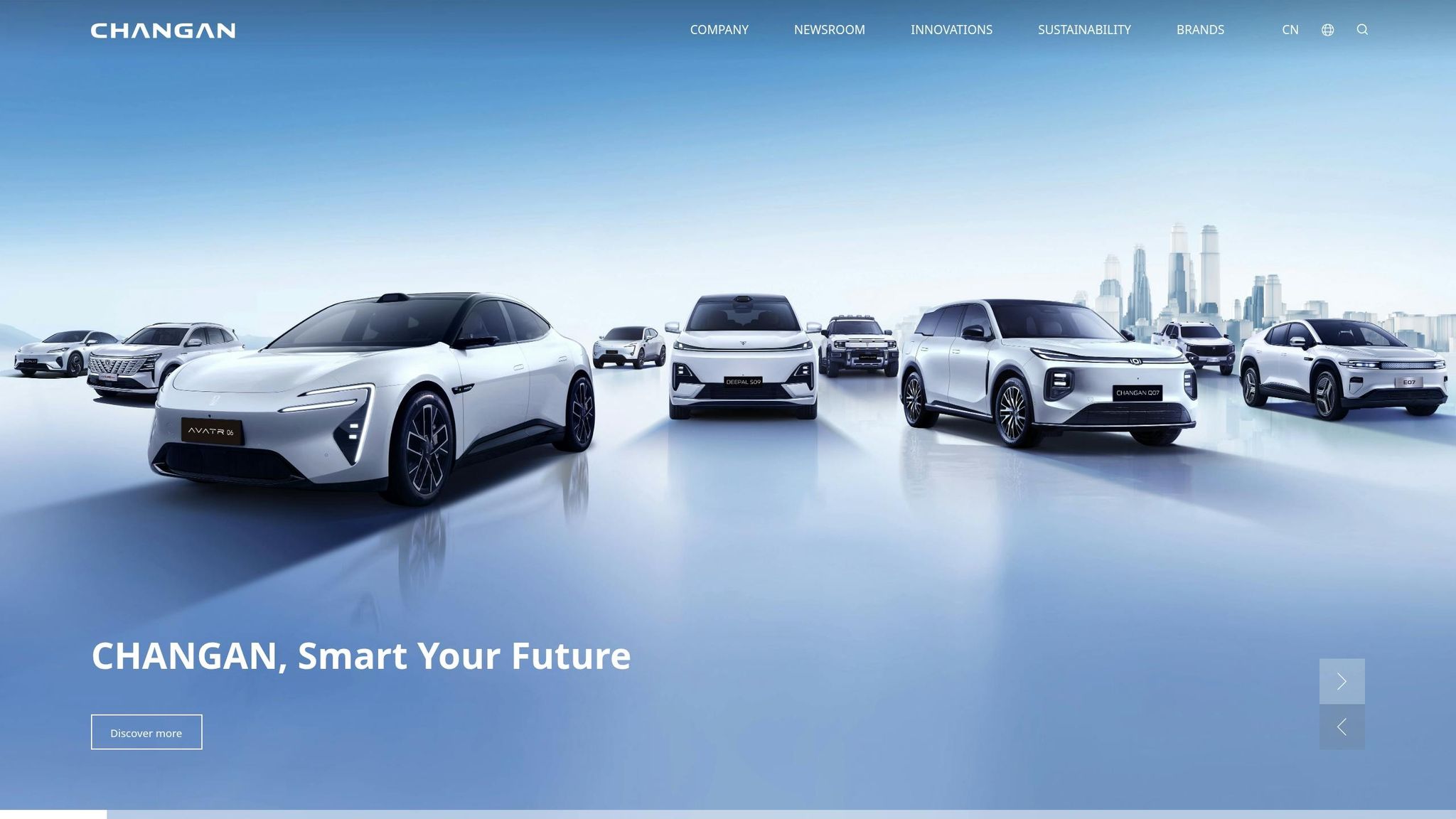
The Changan Benni EV is an entry-level electric vehicle designed with affordability in mind, making it a great choice for first-time EV buyers across Africa. Here’s an overview of what it brings to the table:
Price
This EV is aimed at buyers on a budget. For the most up-to-date pricing, it’s best to reach out to local dealers.
Range
Perfect for city life, the Changan Benni EV offers a range that’s well-suited for short, everyday commutes.
Charging
It’s compatible with standard home charging setups, allowing for convenient overnight charging. In areas where fast-charging stations are available, that option is supported too.
Availability
You can find the Changan Benni EV through dealer networks in major African markets. Both brand-new and certified pre-owned options are available, giving buyers flexibility.
sbb-itb-99e19e3
7. Jet EV
The Jet EV is making its way into Africa’s growing electric vehicle (EV) market. While details about its price, range, charging time, and availability are still under wraps, here’s a quick look at what we know so far.
Price (USD)
Pricing hasn’t been confirmed yet, but several factors – like import duties, taxes, and government incentives – will likely influence the cost. Historically, Chinese EV models tend to be over 60% less expensive than their non-Chinese counterparts.
Range (miles/kilometers)
Specific range details haven’t been shared yet. However, similar entry-level EVs are often designed for city driving and shorter trips, making them ideal for urban commuters.
Charging Time
Charging specifications haven’t been disclosed, but EVs in this category usually support standard home charging through regular outlets. The actual charging time will depend on the battery size and the availability of local charging infrastructure.
Availability (new/used)
It’s unclear when or where the Jet EV will become available in African markets. For the most accurate information, it’s best to check with local EV dealerships about delivery timelines and availability.
8. BYD Atto 3
The BYD Atto 3 is a compact electric crossover designed to offer a mix of affordability and solid features, making it a practical choice for families exploring electric vehicles in South Africa. Manufactured in China, it provides a compelling option for those ready to transition to electric mobility without breaking the bank.
Price (USD)
In South Africa, the BYD Atto 3 comes with a price tag ranging from R768,000 to R835,000, which is approximately $42,667 to $46,389 USD (based on an exchange rate of 1 USD = 18 ZAR). This pricing positions it as a competitive option in the growing EV market.
Range
The Atto 3 boasts an estimated range of up to 423 kilometers (around 263 miles) on a single charge, making it suitable for both daily commutes and longer road trips.
Charging Time
While specific charging times haven’t been disclosed, the Atto 3 supports both home charging setups and fast public charging stations. Actual charging durations will depend on the type of infrastructure used.
Availability
The BYD Atto 3 will be available as a new model in South Africa starting in the second half of 2025. At this time, used models are not yet on the market.
9. Mercedes-Benz EQB

The Mercedes-Benz EQB is a compact luxury SUV that showcases German precision and cutting-edge technology in the electric vehicle market. However, details about its presence in African markets are scarce. Like many high-end EVs in the region, its steep price and uncertain availability highlight the hurdles of introducing luxury electric models to this market.
Price (USD)
In the US, the Mercedes EQB 250+ SUV comes with a price tag of $54,200. This positions it firmly in the premium segment, reflecting its advanced features and luxury appeal.
Range
The EQB 250+ offers an estimated 250-mile range (402 km) on a full charge. This makes it a strong contender for those seeking a balance between performance and efficiency.
Charging Time
Charging options for the EQB are versatile. Using a fast Level 3 charger, you can achieve an 80% charge in about 30 minutes. A Level 2 home charger (240V) adds 25–40 miles of range per hour, while a standard 120V outlet provides around 40 miles of range overnight.
Availability
While the EQB is available in both the US and European markets, its availability in Africa remains uncertain, leaving potential buyers in the region waiting for more clarity.
10. BMW i5

The BMW i5 stands out as a high-end German electric sedan, combining advanced technology with luxurious features. Yet, for many consumers across Africa, it remains more of a dream than a reality due to its limited availability and high cost. Like other premium EVs, the i5 highlights the gap between luxury aspirations and the growing need for affordable electric vehicles in the region.
Price (USD)
The BMW i5 eDrive40 has a starting price of $67,100, making it a choice primarily for wealthy urban buyers.
Range
With an estimated 295 miles (475 km) on a full charge, the i5 eDrive40 offers impressive range. However, actual driving conditions may lead to variations in performance.
Charging Time
While BMW typically equips its models with fast-charging capabilities, specific charging times for the i5 are not detailed. That said, Africa’s limited charging infrastructure could pose challenges for practical use.
Availability
As of 2025, the BMW i5 is available in the United States and select international markets. Unfortunately, its presence in Africa is limited, with factors like high import taxes, scarce charging stations, and its premium price tag restricting broader access in the region.
Advantages and Disadvantages
This section takes a closer look at the key trade-offs facing African electric vehicle (EV) buyers. When choosing an EV, factors like affordability, performance, and practicality play a big role. Each model comes with its own strengths and weaknesses, and buyers must weigh things like purchase price, driving range, charging infrastructure, and after-sales support before making a decision.
Here’s a quick rundown of the advantages and disadvantages of several popular EV models:
| Model | Key Advantages | Main Disadvantages |
|---|---|---|
| BYD Dolphin | Budget-friendly entry-level option with dependable technology | Limited features and availability |
| Dayun S5 | Extremely affordable and ideal for city driving | Best suited for short, urban commutes |
| Dongfeng Box | Compact size, perfect for navigating crowded streets | Limited interior space and cargo capacity |
| Tesla Model 3 | Advanced technology and long driving range | High price and limited local service options |
| Hyundai Kona EV | Reliable brand with solid build quality | Higher price point may deter budget-conscious buyers |
| Changan Benni EV | Affordable and covers basic transport needs | Shorter driving range and minimal features |
| Jet EV | Good mix of features and cost for everyday use | Brand recognition and after-sales support are uncertain |
| BYD Atto 3 | Offers a strong balance of technology and performance | Price may be a barrier for budget-focused buyers |
| Mercedes-Benz EQB | Luxurious build with premium features | Expensive and may face compatibility issues with local charging setups |
| BMW i5 | High-end luxury and cutting-edge driving features | Extremely costly with limited availability in the market |
Affordability is a major consideration for African buyers. Lower-priced EVs are designed for urban use, while premium models offer longer ranges but often face hurdles like high import fees and limited charging infrastructure.
Another challenge lies in specialized servicing and parts availability, especially for newer or less-established brands with smaller dealer networks.
Given these factors, many African buyers are gravitating toward mid-range EVs that strike a balance between modern features, sufficient range, and affordability, aligning with the evolving needs of the market.
Conclusion
By 2025, the affordability of electric vehicles (EVs) in Africa will largely depend on individual budgets and local conditions. For middle-class buyers, models like the Dayun S5 and Changan Benni EV offer cost-effective ways to step into the EV market, while premium options remain priced for higher-income buyers.
Government initiatives and better financing options are helping bridge the gap. Reduced import duties, tax breaks, and specialized EV loans are making models like the BYD Dolphin and Dongfeng Box more appealing alternatives to traditional gas-powered cars. These efforts not only cut initial costs but also improve the overall financial benefits of owning an EV in the long run.
Although EVs come with lower fuel and maintenance costs, the availability of charging infrastructure remains a critical factor. Urban areas are steadily expanding their charging networks, but rural regions still face significant gaps. This makes EV ownership most practical for those who have reliable access to charging at home or in cities.
For budget-conscious buyers, the Dayun S5 and Changan Benni EV are solid choices. Mid-range buyers might lean toward models like the BYD Dolphin or BYD Atto 3 for their blend of modern features and affordability. Meanwhile, luxury buyers can explore options such as the Tesla Model 3 or Mercedes-Benz EQB for a premium driving experience.
FAQs
What makes electric cars more affordable in Africa by 2025?
By 2025, the cost of electric cars in Africa is expected to drop significantly, thanks to several key factors. For starters, battery prices, which make up a large chunk of an EV’s overall cost, have been falling, making these vehicles more affordable. On top of that, growing competition among manufacturers and the expansion of production are helping to push prices even lower.
Government policies are also stepping in to make a difference. Tax breaks and reduced import duties are easing the financial burden for buyers. In some areas, local manufacturing initiatives are further driving down costs by cutting the need for imports. All of these developments are paving the way for a more affordable shift to electric vehicles across the continent.
How do government incentives and local manufacturing affect electric car prices in Africa?
Government programs and local manufacturing efforts are helping to bring down the cost of electric vehicles (EVs) in Africa. For instance, several governments are offering tax breaks and waiving import duties to make EVs more affordable. Ghana, for example, provides a 20% exemption on EV imports, directly reducing costs for buyers.
On top of that, vehicles assembled locally often bypass some import fees, making them even cheaper. These efforts are designed to make EVs more accessible to people while promoting environmentally friendly transportation across the continent.
What challenges make it difficult to adopt electric vehicles in Africa, especially regarding infrastructure and import costs?
Adopting electric vehicles (EVs) in Africa comes with its fair share of challenges. For starters, high import duties and limited local manufacturing significantly increase vehicle costs, putting EVs out of reach for many consumers. This pricing barrier alone makes it harder for widespread adoption to take off.
Another major roadblock is the lack of charging infrastructure. Without a network of public charging stations, potential buyers are left worrying about convenience and whether they can travel long distances without running out of power.
On top of these practical issues, unclear government policies and the absence of meaningful incentives add another layer of difficulty. Without a clear framework or financial support, the shift to EVs becomes even more complicated. Tackling these problems head-on will be key to making electric vehicles a realistic option across the continent.


